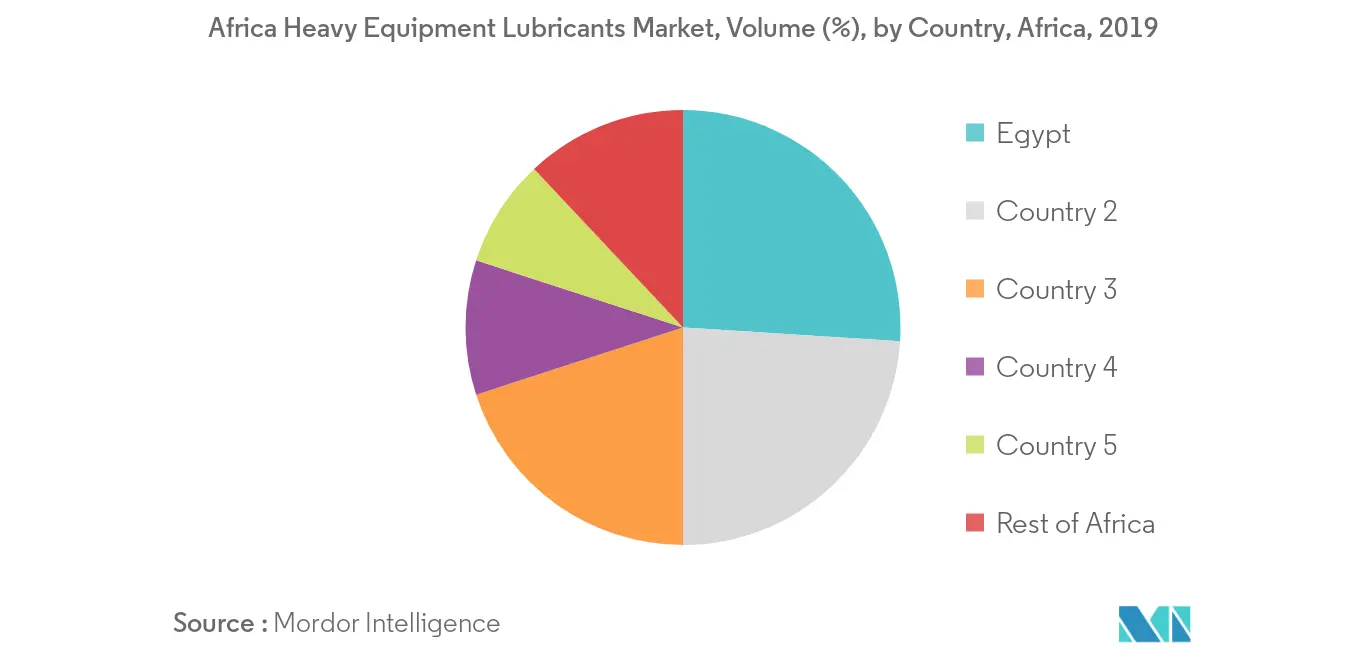Market Trends of Africa Heavy Equipment Lubricants Industry
This section covers the major market trends shaping the Africa Heavy Equipment Lubricants Market according to our research experts:
Mining Industry to Dominate the market
- The equipment used for mining activities are of heavy-duty and are operated under high pressures and temperatures. Hence, components, such as ropes, bearings, bushes, pins, and gears, which are used in various equipment, are subjected to friction, wear, and corrosion, primarily due to the chemicals present underneath the earth. Therefore, regular lubrication of this equipment is required for continuous and efficient mining.
- The formation of dust and sludge on the surfaces is common in the mining industry. The most commonly used lubricants in the mining industry include heavy-duty diesel engine oils, gear oils, transmission oils, greases, and hydraulic fluids.
- The mining industry in Africa has been witnessing significant growth since the past few years.
- For instance, South Africa has the largest mining industry in Africa and mining is the largest segment contributing to South Africa's economy. In 2019, the South African mining industry generated a revenue of ZAR 529 billion, with a 32% increase over the previous year
- Due to the rise in population and persistent demand for minerals and their derivatives in different end-user industries are likely to boost the African mining industries, as it has heavy mineral deposits.
- The above-mentioned factors are anticipated to drive the demand for Africa heavy equipment lubricants during the forecast period.

Egypt to Dominate the Market
- Egypt is the largest market in the African region and is expected to grow at a moderate growth rate over the forecast period.
- Egypt has the largest construction industry in the African region. Furthermore, the construction industry is expected to witness significant growth, owing to the increasing foreign investments in several construction projects.
- Some of the major construction projects in the country are:
- The construction of the Tahrir petrochemical complex in Egypt. This is one of the most prominent real-estate construction projects in Africa. The project is expected to cost USD 10.9 billion. Furthermore, once completed, this project is likely to double the country's total exports.
- El Dabaa nuclear power plant is the largest construction project in Africa and is likely to cost around USD 30 billion. It is a joint venture between the Egyptian Ministry of Electricity and Renewable Energy and the Rosatom State Nuclear Energy Corporation of Russia. The plant is likely to be operational by 2026.
- The Egyptian mining industry is relatively small, with a single gold exporting mine, it is witnessing positive growth, primarily as the revenue generated from the Sukari gold mine has been increasing since the past few years. The mine is expected to have a 7.2 Moz (million ounces) reserve and a life span of 15 years.
- Hence, all such market trends are expected to drive the demand for Africa heavy equipment lubricants market during the forecast period.
- However, the outbreak of novel coronavirus (COVID-19) pandemic has adversely affected the growth of .all end-user industries which is expected to hinder the demand of Africa heavy equipment lubricants over the forecast period.


